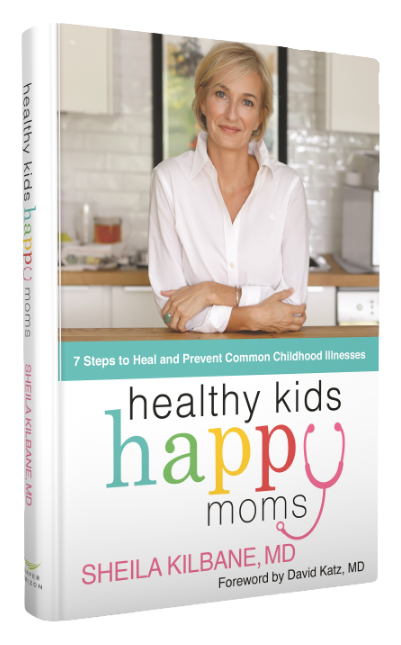I’m sure you remember the commercials from the early 90’s featuring celebrities with those unforgettable milk mustaches, touting the prominent message that milk = strong bones.
But does the scientific literature uphold that claim?
In Chapter 7 of my book Healthy Kids, Happy Moms I discuss this topic in-depth. I include analysis from two leading physicians and researchers in nutrition from Harvard and Yale who were grappling with the same question I was:
Are the US dairy intake recommendations based on science or marketing?
Both physicians I consulted in writing my book–Walter C. Willett, MD, of Harvard and David Katz, MD, MPH, of Yale–discuss the importance of vitamin D for bone health.
As Dr. Katz pointed out “Most populations around the world actually consume less calcium than we do in the US, yet have fewer cases of osteoporosis. This may be due to more weight-bearing exercise elsewhere, less protein and acid in the diet, and more sun exposure–and thus higher levels of vitamin D.”
Turns out, there are several factors beyond calcium that lead to bone health, including four key contributors:
Physical, weight bearing activity, is by far the #1 most important factor in building and maintaining strong, healthy bones.
We must get our kids off the screens and outside to play!
This is a double whammy as outdoor play contributes to higher levels of sunshine exposure and levels of vitamin D.
On average, children get 4-7 minutes of outdoor free play per day. (And the average American spends 90% of their time indoors!)
However, it’s recommended that children get at least 3 hours of free play outdoors per day.
Remember my 7-Day Mini Cleanse? On day #7 I encourage you to remove screens and get outside. It can be as easy as digging in the dirt, climbing on things, dancing, laughing, and absorbing more vitamin D!!
Vitamin D isn’t just critical for bone health.
We have a vitamin D receptor on almost every cell of our body, making it essential to our immune system.
Unfortunately, one billion people worldwide suffer from vitamin D deficiency and 50% of the US population is vitamin D deficient.
Adding Vitamin D3 + K2 is a part of the fourth week in my strategic supplement plan. Vitamin D3 + K2 is available in two forms–liquid or capsule.
Download my Integrative Supplement Guide for more specific dosing and instructions by age.








